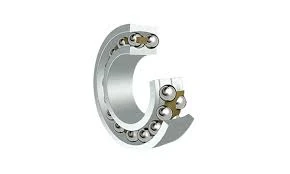
Dec . 13, 2024 03:08 Back to list
spherical roller bearing number
Understanding Spherical Roller Bearing Numbers
Spherical roller bearings are critical components in many industrial applications, including automotive machinery, wind turbines, and heavy equipment. They are designed to accommodate both radial and axial loads and are particularly known for their ability to handle misalignment due to their unique design. One fundamental aspect of working with spherical roller bearings is understanding their numbering system. This article will delve into what spherical roller bearing numbers signify and how to interpret them effectively.
The Basics of Spherical Roller Bearings
Spherical roller bearings consist of an inner ring, an outer ring, and a set of spherical rolling elements—often balls or rollers—that allow for rotational movement. The inner ring typically fits onto a shaft, while the outer ring is housed within a bearing housing. The spherical shape of the rollers enables the bearing to accommodate angular misalignment between the shaft and housing, making it highly effective in applications where there may be shaft deflection or installation errors.
Importance of Bearing Numbers
Every spherical roller bearing has a specific identification number, which serves as a vital reference for engineers, technicians, and manufacturers. This number encodes important information about the bearing's specifications, such as size, design, and load capacity. Understanding this numbering system is essential for selecting the right bearing for a particular application, ensuring optimal performance and durability.
Deciphering the Bearing Number
Typically, a spherical roller bearing number consists of several parts, commonly following the ISO standard. For example, a bearing number might appear as 22218 E, where
1. 222 The first few digits represent the bearing type and series. In this case, 222 indicates a spherical roller bearing.
2. 18 The next group of digits signifies the bore diameter in millimeters. Here, 18 indicates a bore size of 90 mm. This is calculated by multiplying the number by 5 (18 x 5 = 90 mm).
spherical roller bearing number

3. E The final letter(s) will indicate specific design features or modifications. An E suffix typically denotes a bearing with enhanced capacity features or a special design.
Additional Codes and Suffixes
In addition to the basic structure of the bearing number, manufacturers often include additional letters or codes that provide more information about the bearing's features
- C3 Indicates a greater internal clearance, allowing for higher speeds. - T Suggests that the bearing has been designed for increased temperature resistance. - LLB Refers to a specific sealing arrangement to prevent contaminants from entering the bearing.
These additional codes play a crucial role in identifying the bearing's capability and suitability for particular operating conditions.
Application Considerations
When selecting a spherical roller bearing, understanding the bearing number is only the beginning. Engineers must also consider factors such as load conditions, operating speeds, environmental influences, and maintenance requirements. For instance, the operating temperature and the presence of corrosive elements can significantly impact the lifespan of the bearing. Hence, selecting a bearing with the appropriate features as indicated by its number can prevent premature failure and enhance operational efficiency.
Conclusion
Spherical roller bearings are vital components in many mechanical systems, and their identification through bearing numbers can seem complex at first. However, by understanding the structure and significance of these numbers, you can make informed decisions when selecting the right bearing for your application. Always consider the load, speed, and environmental conditions surrounding the bearing's operation, and refer to the bearing numbers for guidance. This knowledge not only aids in maintenance and replacement but also ensures the longevity and reliability of the machinery in which these bearings are employed.
Latest news
-
Premium Deep Groove Ball Bearings | High Speed & Reliability
NewsAug.29,2025
-
Durable Scaffolding Clamps - Secure & Reliable Tube Connectors
NewsAug.28,2025
-
Common Failures in Thrust Ball Bearings and Solutions
NewsAug.22,2025
-
How Tapered Roller Bearings Can Take Shock Loads
NewsAug.22,2025
-
Angular Bearings in High-Precision Spindles
NewsAug.22,2025
-
The Impact of Misalignment on Cylindrical Roller Bearing Performance
NewsAug.22,2025
